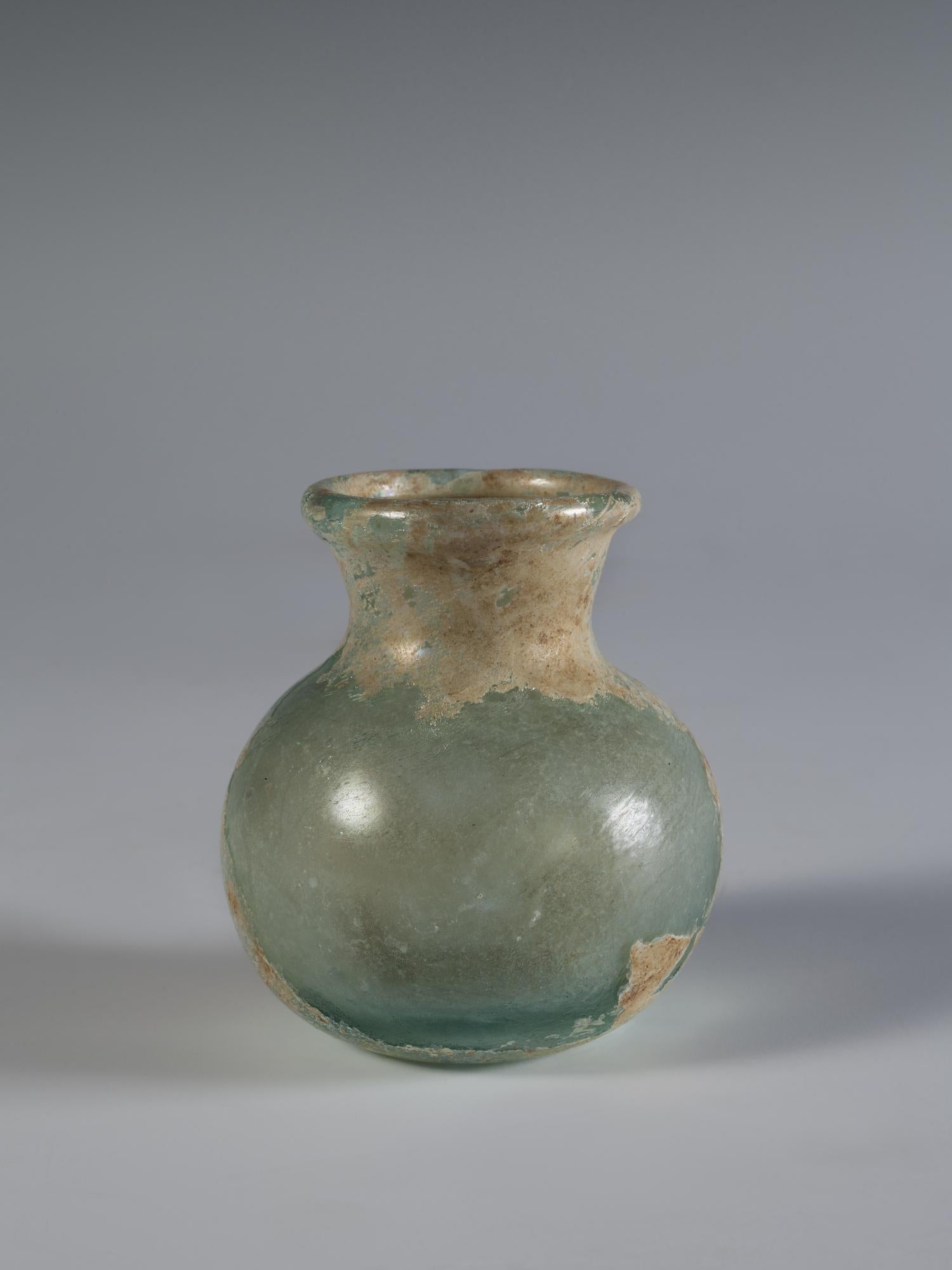2008.18.2.11, Roman Pyriform Unguentarium
Catalogue Entry
From the Catalogue of Ancient Glass in the University of Colorado Museum
Gift of H. Medill Sarkisian and Justine Sarkisian Rodriguez (1979)
Transferred to CU Art Museum (2008)
Height: 5.6 cm
Diameter (max.): 4.8 cm
Roman, 3rd century C.E.
Classification: Isings Form 26a; Harden Fabric 3
Description: Wide mouth with rounded rim folded in. Relatively short neck with concave profile and smooth transition to globular body. Flattened base. Clear with bluish-green tint. Some iridescence and flaking. Blown.
Comment: Six similar specimens are in the Royal Ontario Museum in Toronto (Hayes 1975, nos. 271, 272, 291, 294, 323 and 474). See also Goldman 1950, no. 25; Isings 1971, no. 241 (at Heerlen); Whitehouse 1997, nos. 286 and 289; and Whitehouse 1998, no. 94.
Discussion
This glass bottle is a more bulbous, squatter version of the other unguentaria in CU's collection of Roman glass. It is globular and lacks the long neck which characterizes the others. There are some similar examples of this shape in the Fine Arts Museum of San Francisco.
An unguentarium was used to hold scented oil, perfume, or body lotion used by both men and women. These cosmetics were applied as soon as one awoke, then again after they bathed during the day at the local bathhouse. The most popular scents were saffron, marjoram, and roses, according to Pliny the Elder, a 1st century C.E. Roman author (Natural History XIII.2). Inscriptions from ancient towns such as Pozzuoli indicate that the perfume-makers were usually in the same district as the glassworkers, suggesting that craftworkers realized the efficiency of being near a business they were closely connected to (1).
Footnotes
- Stuart J. Fleming, Roman Glass: Reflections of Everyday Life (Philadelphia: University of Pennsylvania Museum, 1997): 28-31.
References
- Goldman, H. Excavations at Gözlü Kule, Tarsus I: The Hellenistic and Roman Period. Princeton,: Princeton University Press, 1950.
- Hayes, J. W. Roman and Pre-Roman Glass in the Royal Ontario Museum. Toronto: 1975.
- Isings, C. Roman Glass in Limburg. Groningen: Wolters-Noordhoff Publishing, 1971.
- Whitehouse, D. Roman Glass in the Corning Museum of Glass, v. 1. Corning, NY: Corning Museum of Glass, 1997.
- Whitehouse, D. The University of Ghent South-East Arabian Archaeological Project: Excavations at ed-Dur, v. 1: The Glass Vessels. Leuven: Peeters, 1998.


